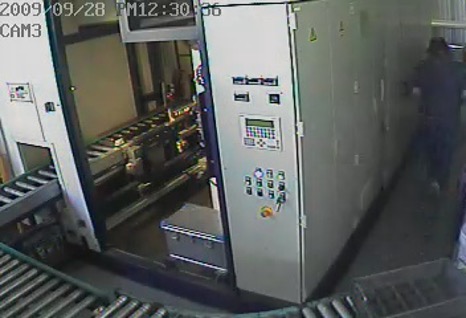TOUR OF OUR NASHVILLE HEADQUARTERS
ProDiesel is based in Nashville, Tennessee and has continued to service its customer base since it was founded by Mr. Samuel Jackson in 1959. His standards of excellence remain an important part of our business philosophy today. We have seen a number of changes in the fuel injection industry over the years. As times have changed, we have remained flexible and forward looking to try to meet the ever-evolving demands of our customers. As the largest After-Market Supplier of remanufactured electronic fuel injectors for all classes of diesel engines, we take pride in our commitment to our customers to always provide superb service and top-quality products at very competitive prices.
Since everyone cannot make it to Nashville to tour our wonderful facility, we thought you might want an inside look. Let’s take a quick tour and show you what we do.
First, incoming cores are inspected and sorted. Our core acceptance policy is very simple. If the injector came out of a running engine and is not rusted or burnt, we will accept it. If the tip is broken, wires pulled out or spring broken, there is no need to worry, because we want the body of the injector. You will get full credit for your core. Sixty-fi ve percent of every injector we sell is built with new parts. Here is a view of our core sorting and storage area.




Since we remanufacture and not just rebuild, we disassemble each injector core to its base components. This is an internal camera view of the tear down and initial inspection area. These parts are sorted and any hard parts that are not usable are collected and sent to recycling centers.
The next step is cleaning in a Biodegradable washer that in six months produces only about 5 gallons of waste.




Then on to secondary cleaning and inspection. Here polishing and fi ne cleaning is completed. Just after this stage is the bluing or oxidization stage where we put OE quality fi nishes back on each part. It not only performs like OE, but also looks like OE.
Once the parts are cleaned, inspected and the quality verified, they move to subassembly where the injector starts to go back together. Here, sections of the injector are assembled and tested to meet pre-assembly specifications. Initial fl ow patterns are also tested and adjusted here.




Once the subassembly is complete, the sections move on to the assembly area where by the demand of our stocking requirements they are completed. Once final assembly is complete each unit will be tested and new O-rings and tip protector installed.
Each injector is tested on the same style machine that the OE’s use and tested to meet OE specifications. These tests are performed on 110% of all injectors. After the injectors are through final testing a manager randomly selects 10% to be retested for quality assurance purposes.




This is an example of the test read out. The area marked in red is out by only 1 point. There are no grey areas here, it either does or does not pass. This injector will be sent back and calibrated to be brought into spec then tested again to ensure OE specifications are met before proceeding.
We have another testing room that is a negative pressure room specializing in remanufacturing common rail injectors. It has 5-micron air filters. We use special lint free cloths which will not clog the injector tips which can be as small as five microns. It takes 20,000 microns to equal an inch. There is over $1,000,000 worth of equipment in this room alone and we have five rooms in all to test and calibrate injectors.




After assembly and testing the injector moves to packaging. Here each injector is laser etched with a part number and date code. This information allows us to track when it was made and the tests results. We can even determine who assembled and tested the injector for quality purposes.
Once laser etching is complete, the injector is wrapped, and heat shrink applied to seal it from contamination. During packaging installation information is included the box. If the injector needs trim codes for its installation, a CD with the proper trim code is sent with the injector. Our packaging includes a protective foam liner to prevent damage during shipping. Last, we insert a STOP sign fl yer to encourage the installer to call us first if they suspect an issue. This allows us to go over some basic installation questions with the end user which takes the fear out of selling injectors for your salesperson.


As a leader in fuel injection we are constantly attempting to empower our industry and technicians with knowledge concerning fuel injection. Our industry leading ProVantage Warranty has uniquely positioned us to test injectors when they are returned with our no fault no questions asked policy. This has allowed us over the years to conduct research to help solve the age-old question,
Why Injection Products Fail?
Over 65% of ProVantage returns are for non-injector related issues. Research points to these 4 major issues that make up Alleged Warranty Returns.
1. Contamination
2. O-Ring damage (cut, pinched or rolled)
3. Diagnosis (Improper Diagnostics)
4. Inherent OEM Injection Design
Three of these are preventable during installation and NOT injector related.
Please remember that care must be used during installation to avoid these problems.


